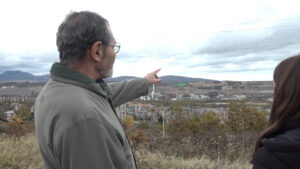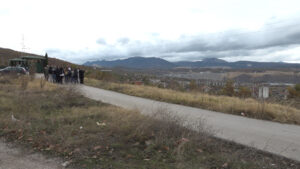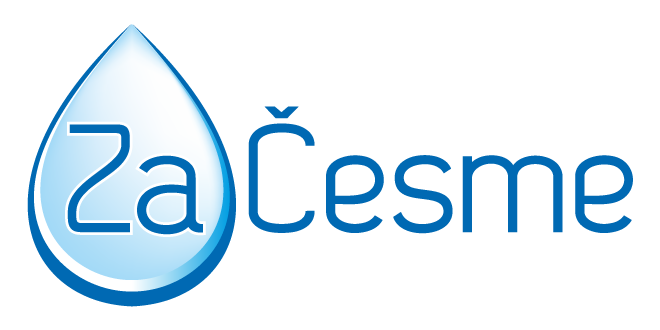
28/11/2023
Environmental workshops for young people within the project “Environmental response in Timočka Krajina”

Educating and informing young people about the environmental problems that surround them in Timočka Krajina is one of the most important goals of the project “Environmental response to mining expansion in Timočka Krajina” funded by the EU, and implemented by the Association “Za Drinking Fountains” and partner organizations from Bor and Zaječar. The project envisages five ecological workshops for young people, which are designed as a combination of theoretical interactive discussion about certain problems, followed by a visit to certain locations where the participants of the workshops would see what they learned.
Thus, during the first workshop in Zaječar, there was talk about the constitutionally guaranteed rights of people to live in a clean environment, have healthy and unpolluted water and food, and then near the village of Vražogrnac, in the Borska River, they could see the consequences of pollution from mining. Also, on the spot, they witnessed the beauty of Rgotsko Lake in its unorganized surroundings, because it is still officially a quartz sand mining mine, since its reclamation has not been carried out for more than four decades.
The second environmental workshop was held in Bor for young people from Bor and Zaječar. On this occasion they learned something more about mining tailings. Tailings are different, depending on which mining process they are from, but what is most important is that they contain smaller or larger percentages of heavy metals and dangerous chemicals that devastate the environment, but also affect human health.
Teacher Lela Skrobonja, who teaches a group of mining subjects at the Technical School in Bor, said that 100 years of mining in this area left 27 million tons of tailings. Tailings have occupied large areas of fertile land that used to be cultivated in the villages around Bor, and it contains and emits into the atmosphere pollutants from dust particles to heavy metals that are dangerous to health.
All mine waste dumps are potential polluters, to a greater or lesser extent, said Dragan Ranđelović from the Association of Young Researchers Bor. The only protection against them is the reclamation of those landfills, but it would be efficient and less polluting if it were done in parallel with mining. This was certainly not the practice of the Bor mine and others in Serbia in the past, so in a list made by the Ministry of Mining and Energy, it was stated that there are about 200 mines and companies that did not recultivate the ore after exploitation, pointed out Ranđelović.
After the theoretical part, all participants visited the mining dumps around Bor, where they saw for themselves the scale of mining by products. Toxic dust carried by the wind from landfills, polluted rivers, an increase in the number of cancer patients, are some of the
consequences that the workshop participants are also aware of.
About 5-6 kilometers by bus and a wider tour around the mining area of the city, towards Slatina, Oštrelj, towards Brezonik, along the perimeter of the old mine tailings, towards the Veliki Krivelj mine and back to Bor, convinced them of the extent of the current expansion of mining, but also some solutions for recultivation or backfilling of the old mine where this tour ended. By the end of the project “Environmental response to mining expansion in Timočka Krajina”, young people will participate in three more workshops that will be held in Bor and other towns in this region.
Association “Za Drinking Fountains”
This text was produced within the project “Environmental response to mining expansion in Timočka Krajina” funded by the European Union, and implemented by the Association “Za Drinking Fountains”, the Association of Young Researchers Bor, Civic Library “Europe” Bor and Children’s Center Zaječar. The content of the text is entirely responsibility of these associations and do not necessarily reflect the views of the European Union.




